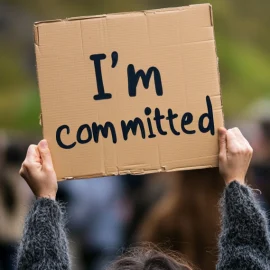

This article is an excerpt from the Shortform book guide to "Win Bigly" by Scott Adams. Shortform has the world's best summaries and analyses of books you should be reading.
Like this article? Sign up for a free trial here .
Do you think being persuasive is a matter of personality or skill? Does persuasion come naturally to you?
Some people owe their persuasion powers to their personality—it comes naturally to them. If that’s not the case for you, don’t panic! According to Scott Adams, persuasion is a skill that can be developed through practice, just like anything else.
No matter whether you are taking the logic or the emotion route, the following persuasion principles hold true for both.
Principles of Persuasion
According to Scott Adams, persuasion involves a combination of nuanced communication skills which take time and practice to master. In his book Win Bigly, he describes a range of persuasion methods politicians use in their campaigns. These methods are in turn underpinned by the following three overarching principles.
1. Communicate Simply
Simple is catchier. It’s easier to understand and remember.
Get rid of extra words. Don’t write “he was very happy” when you can write “he was happy.” Prune your sentences.
Write short sentences. Avoid putting multiple thoughts in one sentence. Readers are lazier and less thoughtful than you think.
Your first sentence needs to grab the reader and inspire curiosity. Keep rewriting it until it’s good.
- Scott Adams began his post with “I went from being a bad writer to being a good writer after taking a one-day course in business writing.”
For humorous writing, choose your words with specificity. Don’t say “drink” when you can sway “swill.”
Learn how brains organize ideas.
- “The boy hit the ball” is easier to understand than “the ball was hit by the boy.” Actors do things to objects.
- (Shortform note: start with the trunk of an idea, then attach details as branches and leaves to the trunk of the tree. Connect new ideas to other ideas the reader already knows. Summarize your main points after you’re done.)
2. Persuasion Talent Stack
A persuasion talent stack is a collection of persuasion-related skills that work well together. The more you can combine, the more persuasive you will be.
According to Scott Adams, Trump’s talent stack made him very persuasive even when he wasn’t notably brilliant in any one field.
- Trump had the combination of (Publicity | Reputation | Strategy | Negotiating | Persuasion | Public speaking | Sense of humor | Quick on his feet | Thick skinned | High-energy | Size and appearance | Intelligence)
One popular perception of how Trump won is that he understood the ethos of America and devised the policies they wanted. Adams argues the opposite – Trump convinced the public that his policies were the ones that mattered.
Combining multiple skills together is rare. Being pretty good at multiple skills makes you more valuable than being very good at one skill.
- Scott Adams notes that he is nowhere near the best cartoonist nor the best comedian, but he is one of the best comedian cartoonists.
3. Visual Imagery
Images stick more stably in people’s minds, making them more readily available and thus thought about more.
Use simple imagery.
Leave it vague enough to let people fill in their own blanks.
Examples
- Trump’s “big, beautiful wall.” If you’re like most people, you pictured a large concrete wall 15 feet high.
- Obviously, this would be impractical – a metal fence or digital sensors would be better – but the imagery was powerful. “The wall” was obviously more persuasive and catchy than “border control using a variety of security technologies.”
- He didn’t provide his own renderings or descriptions of the wall. Het let people imagine it, which made them more attracted to their own conception of the idea.
- Trump cultivated his visual identity:
- On SNL, a skit imagined him as the president sitting in the Oval Office giving an address. This was a huge influence on picturing him as a legitimate president.
- In contrast, Clinton’s SNL skit had her play a bartender serving a drunken Clinton. This visual imagery was terrible, especially in contrast with Trump, a noted abstainer.
- Trump’s private jet reminds you of Air Force One. Filming him stepping out of the plane makes him look presidential.
- On SNL, a skit imagined him as the president sitting in the Oval Office giving an address. This was a huge influence on picturing him as a legitimate president.
- Trump’s bright red MAGA hat. It was clearly identifiable, created social proof and tribalism, made people’s beliefs consistent with their behavior of wearing the hat. Red is the color of sex and power, and also the Republican party.
- After accusations of racism, Trump was pictured kissing a lot of black babies.
- (Shortform note: when introducing the Macbook Air, Steve Jobs pulled it out of a manila envelope. Much more effective than simply saying the laptop was 13mm thick.)

———End of Preview———
Like what you just read? Read the rest of the world's best book summary and analysis of Scott Adams's "Win Bigly" at Shortform .
Here's what you'll find in our full Win Bigly summary :
- The persuasion tactics Donald Trump used throughout the 2016 presidential campaign
- Why Hillary Clinton's campaign fell short
- How to leverage people’s biases and irrationality to persuade on your point of view





